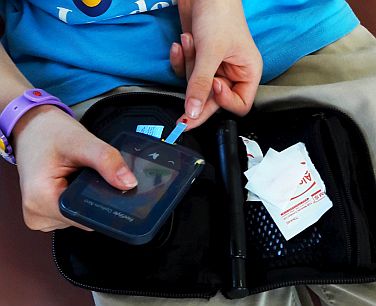The main goals of daily management of diabetes are to:
• Maintain normal growth and development
• Keep blood sugar levels within a target range (not too high, not too low); and
• Promote healthy well-being

The key to well-managed diabetes is a good balance between food, exercise and insulin. Children with Type 1 diabetes must follow blood check, insulin injection and snack schedules. This is important as the smallest of changes from a child’s diabetes care plan can cause blood glucose levels to rise or fall.
Food raises blood glucose levels, while insulin and exercise lower them. A good diabetes care plan includes:
- Eating reasonably, consistently and on schedule
- Regularly testing blood glucose levels
- Adjusting insulin based on blood glucose levels and activities
- Regular exercise
Aiming for ‘normal’ blood glucose levels will also help prevent or delay the development of diabetes related complications.
What should my blood glucose levels be?
Everyone with Type 1 diabetes will have their own diabetes treatment plan, as everyone is different. Therefore, please check with your child’s health professional what levels your child should be aiming for. However, there are general guidelines about what blood glucose levels should be for people with diabetes:
| Ideal range | Consult your doctor if | |
|---|---|---|
| Before meals | 4-7 mmol/L | Blood glucose is consistently lower than 4 mmol/L or higher than 10 mmol/L before meals |
| Two hours after a meal | 8-9 mmol/L | |
| At bedtime | 6-10 mmol/L | Blood glucose is consistently lower than 6 mmol/L or higher than 12 mmol/L at bedtime |
Ideal blood glucose levels may be different for children and for those who are at greater risk of hypoglycaemia.
Always consult with a health professional if you have any concerns and follow your child’s treatment plan.





